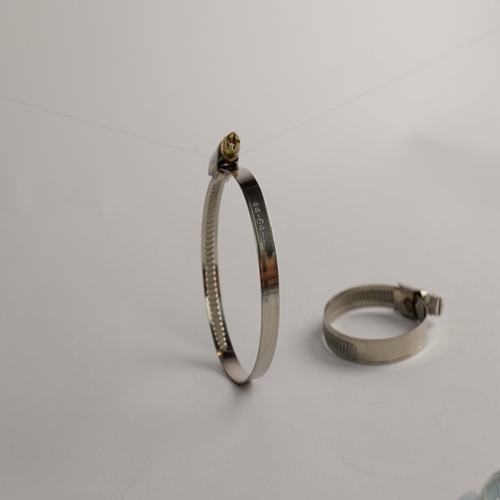- Phone:+86-17331948172 +86-0319-8862898
- E-mail: inquiry@puxingclamp.com
آگوست . 13, 2024 03:12 Back to list
High-Quality Double Wire Hose Clamp Manufacturing with Precision and Durability for Various Applications
Exploring Double Wire Type Hose Clamps An Overview of the Manufacturing Process
In the world of automotive and industrial applications, the importance of reliable connections cannot be overstated. Among the myriad components essential for ensuring these connections are hose clamps, and specifically, double wire type hose clamps. This article delves into the manufacturing process of double wire type hose clamps in factories, highlighting their significance, production techniques, and quality control measures.
What is a Double Wire Type Hose Clamp?
Double wire type hose clamps are specialized fastening devices designed to secure hoses to fittings in a variety of applications, including automotive, plumbing, and manufacturing. The structure of these clamps consists of two parallel wires that provide enhanced grip and distribute pressure evenly along the hose. This design is particularly beneficial in high-pressure environments, ensuring that the hose remains securely attached and preventing leaks.
The Manufacturing Process
The manufacturing of double wire type hose clamps involves several critical steps, each designed to ensure that the final product meets stringent quality and performance standards.
1. Material Selection The first step in the production process is selecting the right materials. Typically, stainless steel is the preferred choice due to its resistance to corrosion, strength, and durability. In some cases, manufacturers may also use galvanized steel for applications where moisture exposure is minimal.
2. Wire Forming Once the material is selected, the metal is processed into wire. This involves drawing the metal through a series of dies to achieve the desired diameter. The wire must be precisely formed to ensure that it fits perfectly when assembled into a hose clamp.
double wire type hose clamp factory

3. Bending and Shaping After forming the wire, it is then bent and shaped to create the double wire loop. This process can be performed using automated machinery that ensures accuracy and repeatability. The shaping is crucial as it determines how well the clamp will grip the hose and withstand varying levels of pressure.
4. Assembly The next stage involves assembling the two wire loops. This is typically done using a combination of precise robotic machinery and skilled labor. During assembly, additional components like screws or locking mechanisms are integrated to ensure that the clamp can be easily tightened and adjusted after installation.
5. Surface Treatment To enhance corrosion resistance and improve aesthetics, the clamps often undergo surface treatment processes. This may include galvanization, powder coating, or passivation, depending on the intended application and environmental conditions.
6. Quality Control A vital component of the manufacturing process is quality control. Each batch of double wire type hose clamps is subjected to rigorous testing. This includes checks for material integrity, tensile strength, and pressure resistance. Any failures at this stage result in a total recall, ensuring that only the most reliable clamps reach the market.
7. Packaging and Distribution Finally, once the clamps pass quality tests, they are carefully packaged for distribution. Manufacturers often bundle them in sets or packs based on customer needs, ensuring that they are ready for immediate use in various applications.
Conclusion
Double wire type hose clamps play an indispensable role in various industries, providing secure connections that withstand high pressure and adverse conditions. The manufacturing process, from material selection to quality control, requires precision and expertise. As industries continue to evolve and demand higher standards, the factories producing these clamps must adapt and innovate, ensuring they remain an integral part of the global supply chain. As consumers and businesses, understanding the complexity behind these seemingly simple components can lead to better choices when it comes to applications requiring hose connections.
-
Large Stainless Steel Adjustable American Type Hose Clamp - Hebei Pux Alloy | Corrosion Resistance, Adjustable Design
NewsAug.03,2025
-
Large Stainless Steel Adjustable American Type Hose Clamp - Hebei Pux Alloy Technology Co., Ltd | Corrosion Resistance, Adjustable Design
NewsAug.03,2025
-
Premium Stainless Steel Strip Coil | Durable & Rust-Resistant
NewsAug.03,2025
-
Large Stainless Steel Adjustable American Type Hose Clamp - Hebei Pux Alloy Technology Co., Ltd
NewsAug.03,2025
-
Large Stainless Steel Adjustable American Type Hose Clamp - Hebei Pux Alloy Technology Co., Ltd
NewsAug.02,2025
-
Large Stainless Steel Adjustable American Type Hose Clamp - Hebei Pux Alloy Technology Co., Ltd
NewsAug.02,2025




